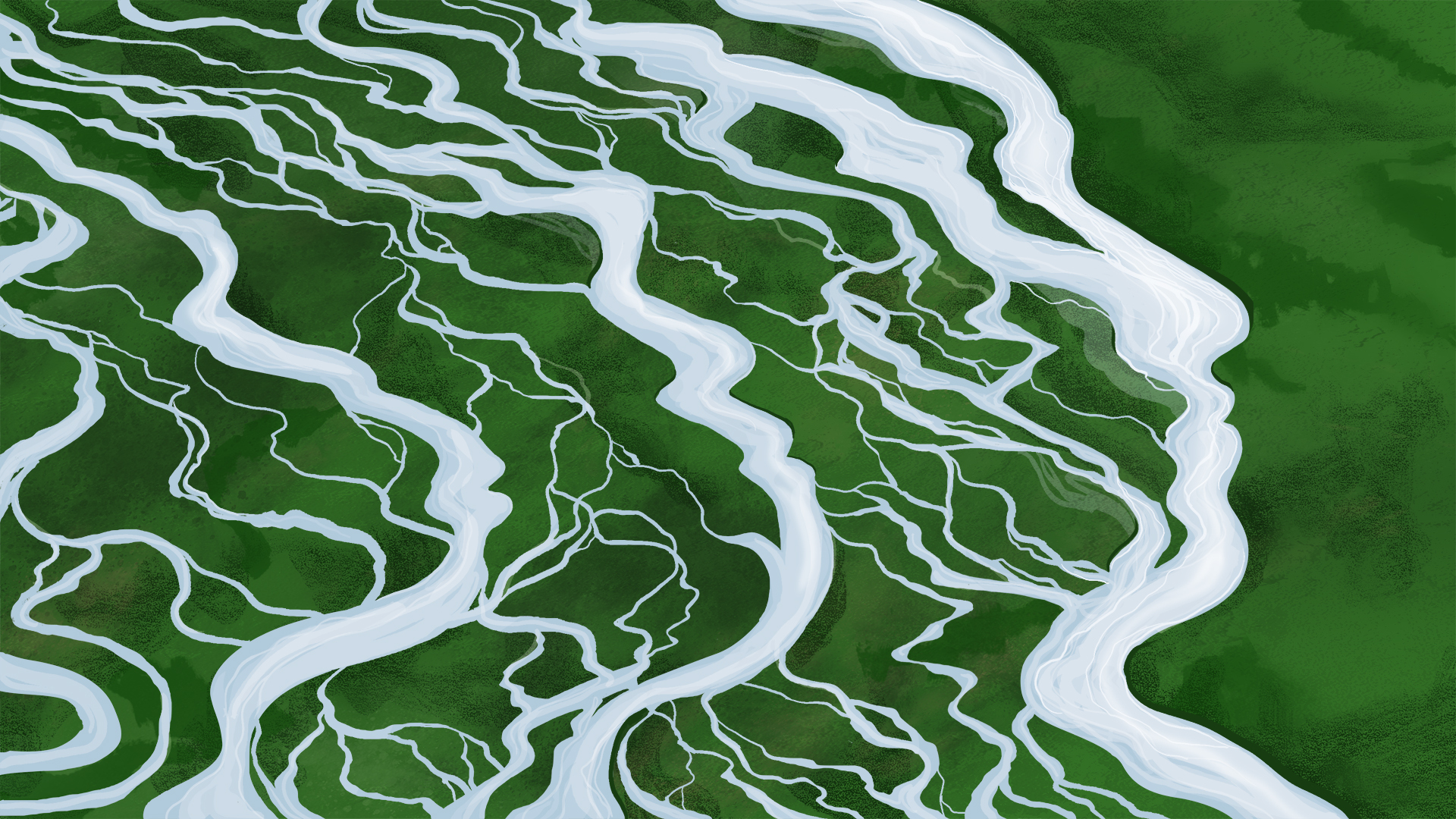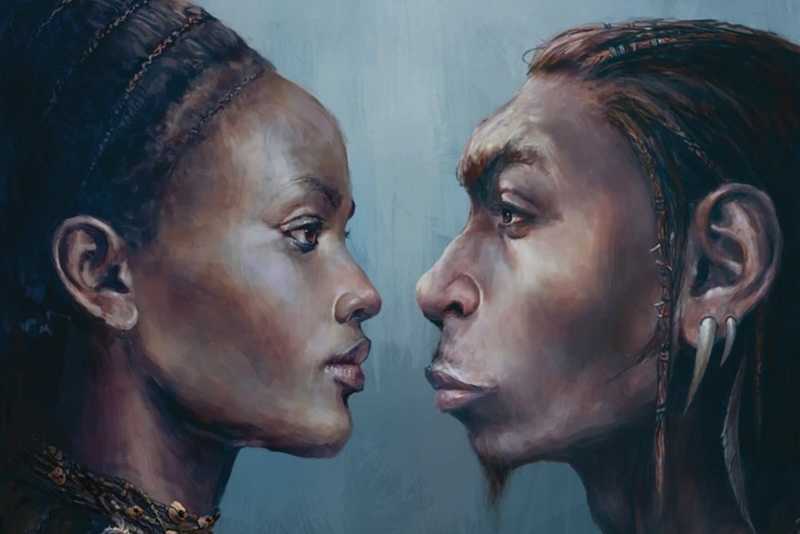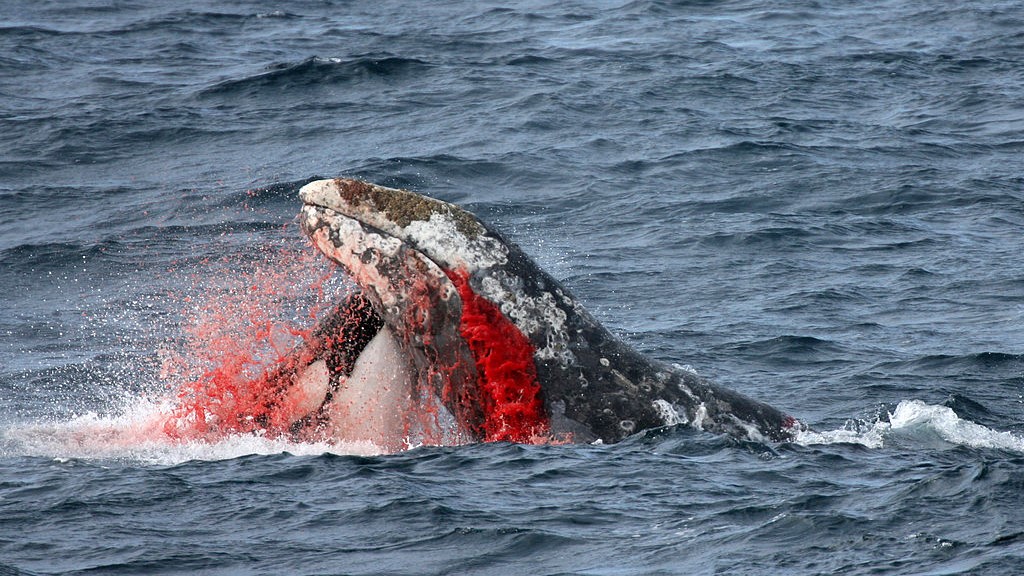A braided stream, not a family tree: How new evidence upends our understanding of how humans evolved

Evidence is mounting that the evolution of our species is more convoluted than we imagined — more like a braided stream than a branching tree.

Our species is the last living member of the human family tree. But just 40,000 years ago, Neanderthals walked the Earth, and hundreds of thousands of years before then, our ancestors overlapped with many other hominins — two-legged primate species.
This raises several questions: Which other populations and species did our ancestors mate with, and when? And how did this ancient mingling shape who we are today?
"Everywhere we've got hominins in the same place, we should assume there's the potential that there's a genetic interaction," Adam Van Arsdale, a biological anthropologist at Wellesley College in Massachusetts, told Live Science.
In other words, different hominin species were having sex — and babies — together. This means our evolutionary family tree is tangled, with still-unknown relatives possibly hiding in the branches.

Emerging DNA evidence suggests this "genetic interaction" resulted in the diversity and new combinations of traits that helped ancient humans — including our ancestors — thrive in different environments around the globe.
"It's all about variation," Rebecca Ackermann, a biological anthropologist at the University of Cape Town in South Africa, told Live Science. "More variation in humans allows us to be more flexible as a species and, as a result, be more successful as a species because of all the diversity."
Cutting-edge techniques may illuminate the crucial periods deeper in our evolutionary past that led to Homo sapiens evolving in Africa, or even shed light on periods before the Homo genus existed. That knowledge, in turn, could improve our understanding of exactly what makes us human.
Get the world’s most fascinating discoveries delivered straight to your inbox.
Related: Lucy's last day: What the iconic fossil reveals about our ancient ancestor's last hours
A braided stream
In the early 20th century, scientists thought there was a clear evolutionary line between our ancestors and us, with one species sequentially evolving into another and no contribution from "outside" populations, like the branches on a tree.
But 21st-century advances in ancient DNA analysis techniques have revealed that our origins are more like a braided stream — an idea borrowed from geology, where shallow channels branch off and rejoin a stream like a network.
"It becomes very hard when you think about things in more of a braided stream model to divide [populations] into discrete groups," Ackermann said. "There are not, by definition, any discrete groups; they have contributed to each other's evolution."
Ackermann studies variation and hybridization — the exchange of genes between different groups — across the evolutionary history of hominins, to better understand how genetic and cultural exchange made us human. And she thinks hybridization both within and outside Africa played a significant role in our origins.
Evidence of such hybridization has come out in a steady stream since the first Neanderthal genome was sequenced in 2010. That research program, which earned geneticist Svante Pääbo a Nobel Prize in 2022, revealed that H. sapiens and Neanderthals regularly had sex. It also led to the discovery of the Denisovans, a previously unknown population that ranged across Asia from about 200,000 to 30,000 years ago and that also had offspring with both Neanderthals and H. sapiens.
"You have so much complexity that it makes no sense to say there was only one origin of sapiens. There can't be one universal model that explains literally every human on Earth."
Sheela Athreya, Texas A&M University
When species share genes with one another through hybridization, the process is known as introgression, and when those shared genes are beneficial to a population, it's known as adaptive introgression.
Emerging from two decades of gene studies of humans and our extinct relatives is the understanding that we may be who we are thanks to a proclivity to pair off with anyone — including other species.
Connecting with other groups — socially and sexually — was an important part of human evolution. "For us to survive and become human probably really depended on that," Van Arsdale said.
Benefits of hybridization
Since the first Neanderthal genome was sequenced, researchers have attempted to identify when and how often our H. sapiens ancestors mated with other species and groups. They've also investigated how Neanderthal and Denisovan genes affect us today. Many of these studies rely on large datasets of genomes from humans living today and tie them back to ancient DNA extracted from the bones of extinct humans and their relatives who lived tens of thousands of years ago.
These analyses show that many genes that originated in now-extinct groups may confer advantages to us today. For instance, modern Tibetans have a unique gene variant for high-altitude living that they likely inherited from the Denisovans, while different versions of Neanderthal skin pigment genes may have helped some populations adapt to less-sunny climates while protecting others from UV radiation.
There is also evidence that Neanderthal genes helped early members of our species adapt quickly to life in Europe. Given their long history in Europe prior to the arrival of H. sapiens, Neanderthals had built up a suite of genetic variations to deal with diseases unique to the area. H. sapiens encountered these novel diseases when they spread into areas where Neanderthals lived. But, by mating with Neanderthals, they also got genes that protected them from those viruses.

Beyond specific traits that may confer advantages in humans today, these episodes of mating diversified the human gene pool, which may have helped our ancestors weather varied environments.
The importance of modern genetic diversity can be illustrated with human leukocyte antigen (HLA) genes, which are critical to the human immune system's ability to recognize pathogens. Humans today have a dizzying array of these genes, especially in eastern Asia. This area of the world is a "hotspot" for emerging infectious diseases due to a combination of biological, ecological and social factors, so this diversity may provide advantages in an area where new diseases are frequently emerging.
When genetic diversity is lost through population isolation and decline, groups may become particularly susceptible to new infections or unable to adapt to new ecological circumstances. For instance, one theory holds that Neanderthal populations declined and eventually went extinct around 40,000 years ago because they lacked genetic diversity due to inbreeding and isolation.
Related: Did we kill the Neanderthals? New research may finally answer an age-old question.
Discovery of "ghost populations"
Some of the newest research goes deeper into evolutionary time, identifying "ghost populations" — human groups that went extinct after contributing genes to our species. Often, archaeologists have no skeletal remains from these populations, but their echoes linger in our genome, and their existence can be gleaned by modeling how genes change over time.
For instance, a "mystery population" of up to 50,000 individuals that interbred with our ancestors 300,000 years ago passed along genes that created more connections between brain cells, which may have boosted our brain functioning.
The population that hybridized with H. sapiens and helped boost our brains may have been a lineage of Homo erectus. This species was once thought to have disappeared after evolving into H. sapiens in Africa, but anthropologists now think H. erectus survived in parts of Asia until 115,000 years ago.
In fact, our evolutionary history may include the mating of populations that had been separated for up to a million years, Van Arsdale said. These "superarchaic" populations are increasingly being discovered as we mine our own genomes and those of our close relatives, Neanderthals and Denisovans.
For instance, a genetic study published in 2020 identified a superarchaic population that separated from other human ancestors about 2 million years ago but then interbred with the ancestors of Neanderthals and Denisovans around 700,000 years ago. Experts don't know exactly what genes this superarchaic ghost population shared with our ancestors or who it was, but it may have been a lineage of H. erectus.
Evolutionary blank space
But there's a large, unmapped region of human evolutionary history — and it's crucial for our identity as a species.
The period when H. sapiens was first evolving in Africa, and the more distant period of human evolutionary history on the continent that predates the Homo genus, remains a huge knowledge gap. That's in part because DNA preserves well in caves and other stable environments in frigid areas of the world, like those found in areas of Europe and Asia, while Africa's warmer conditions usually degrade DNA. As a result, the most ancient complete human DNA sequence from Africa is just 18,000 years old. By contrast, a skeleton discovered in northern Spain produced a full mitochondrial genome from a human relative, H. heidelbergensis, who lived more than 300,000 years ago.
"Maps of human ancient DNA are overwhelmingly Eurasian data," Van Arsdale said. "And the reality is that's a marginal place in our evolutionary past. So to understand what was happening in the core of Africa would be potentially transformative."
This is where current DNA technology falls short.
Small hominins that walked on two legs, called australopithecines, evolved around 4.4 million years ago in Africa. And between 3 million and 2 million years ago, our genus, Homo, likely evolved from them. H. sapiens evolved around 300,000 years ago in Africa and then traveled around the world. But given the scarcity of ancient DNA from Africa, it is difficult to figure out which groups were mating and hybridizing in that vast time span, or how the fossil skeletons of human relatives from the continent were related.

A new technique called paleoproteomics could help shed light on our African origin as a species and even reveal clues about the genetic makeup of australopithecines and other related hominins. Because genes are the instructions that code for proteins, identifying ancient proteins trapped in tooth enamel and fossil skeletons can help scientists determine some of the genes that were present in populations that lived millions of years ago.
Still, it's a very new technique. To date, paleoproteomic analysis has identified only a handful of incomplete protein sequences in ancient human relatives and has thus far been able to glean only a small amount of genetic information from those.
But in a landmark study published this year, researchers used proteins in tooth enamel to figure out the biological sex of a 3.5 million-year-old Australopithecus africanus individual from South Africa. And in another study, also published this year, scientists used tooth enamel from a 2 million-year-old human relative, Paranthropus robustus, to identify genetic variability among four fossil skeletons — a finding that suggests they may have been from different groups, or even different species.
Paleoproteomics is still pretty limited, though. In a recent study, scientists analyzed a dozen ancient proteins found in fossils of Neanderthals, Denisovans, H. sapiens and chimpanzees. They found that these proteins could help reconstruct a family tree down to the genus level, but were not useful at the species level.
Still, the fact that protein data can be used to reconstruct part of the braided stream of early humans and to identify the chromosomal sex of human relatives is encouraging, and further research along these lines is needed, experts told Live Science.
Some are confident new approaches could help us unpack these early interactions.
"I think we're going to learn a lot more about Africa's ancient past in the next two decades than we have so far," Van Arsdale said.
Ackermann is more cautious. To really understand when, where and with whom our human ancestors mated and how that made us who we are, "we need to have a whole genome" from these ancient human relatives, she said. "With proteins, you just don't get that."
Sheela Athreya, a biological anthropologist at Texas A&M University, is optimistic that we can use these new techniques to tease apart our more distant evolutionary past — and that it will yield surprises. For instance, she thinks what we now call Denisovans may actually have been H. erectus.
"Absolutely in my lifetime, someone will be able to get a Homo erectus genome," Athreya said, likely from colder areas of Asia. "I'm excited. I think it'll look Denisovan."
Either way, it's clear that a whole lot of mixing made us human.
The Homo lineage may have first evolved in Africa, Athreya said. "But once it left Africa, you have so much complexity that it makes no sense to say there was only one origin of sapiens. There can't be one universal model that explains literally every human on Earth."

Kristina Killgrove is a staff writer at Live Science with a focus on archaeology and paleoanthropology news. Her articles have also appeared in venues such as Forbes, Smithsonian, and Mental Floss. Kristina holds a Ph.D. in biological anthropology and an M.A. in classical archaeology from the University of North Carolina, as well as a B.A. in Latin from the University of Virginia, and she was formerly a university professor and researcher. She has received awards from the Society for American Archaeology and the American Anthropological Association for her science writing.
You must confirm your public display name before commenting
Please logout and then login again, you will then be prompted to enter your display name.


